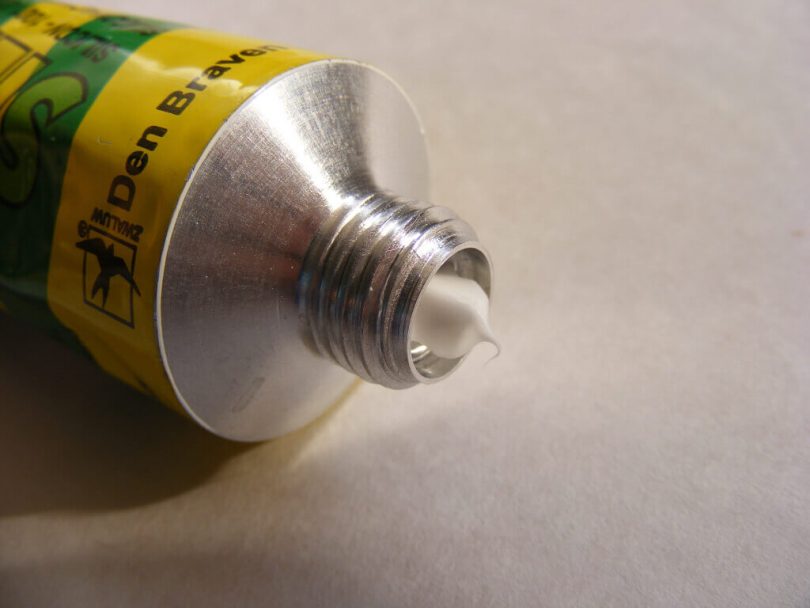Table of Contents
Aquarium silicone is a commonly used adhesive in the aquarium hobby. It is used to seal aquariums, attach decorations, and repair leaks. However, one of the most important aspects of using aquarium silicone is knowing how long it takes to dry.
The drying time of aquarium silicone can vary depending on several factors such as temperature, humidity, and the thickness of the silicone layer.
Generally, it takes 24 to 48 hours for aquarium silicone to fully cure and become waterproof. However, in some cases, it can take up to 72 hours or more for the silicone to dry completely.
It is important to note that using the aquarium before the silicone has fully cured can be detrimental to the health of the fish and other aquatic life. In addition, it can cause leaks and other issues that can be costly to repair.
Therefore, it is crucial to wait until the silicone is fully cured before filling the aquarium with water and adding any fish or decorations.
What is Aquarium Silicone?
Aquarium silicone is a type of adhesive sealant specifically designed for use in aquarium construction and maintenance. Unlike regular silicone sealants, aquarium silicone is entirely safe for aquatic life, as it does not contain any harmful chemicals or toxins that could leach into the water.
It is usually made from 100% silicone rubber, ensuring it remains non-toxic and does not affect the health of your fish or other aquatic inhabitants.
This specialized silicone creates a strong and watertight bond, making it ideal for securing glass panels together and sealing various aquarium components, such as overflow boxes, bulkheads, and decorations.
It forms a durable barrier that prevents water from leaking out of the tank and ensures that your aquarium stays intact for many years.
Why is it Used?
Aquarium silicone is an indispensable tool for any aquarium enthusiast or professional due to its numerous benefits:
- Waterproof Sealant: As mentioned earlier, aquarium silicone forms a waterproof seal, which is essential for keeping the water inside the tank. Whether you’re assembling a new aquarium or repairing a leak, this silicone is your go-to solution.
- Non-Toxic: The health and well-being of your aquatic pets are of utmost importance. Regular silicone sealants can contain harmful additives, but aquarium silicone is completely safe, so you don’t need to worry about any adverse effects on your fish or other aquatic organisms.
- Flexibility and Durability: Once cured, aquarium silicone remains flexible, allowing it to withstand the pressure and movement caused by the weight of the water. Its durability ensures that it won’t crack or deteriorate over time, providing a long-lasting solution.
- Clear Appearance: Aquarium silicone dries to a clear finish, ensuring that it doesn’t detract from the aesthetics of your aquarium setup. This is particularly important when creating aquascapes or displays where visual appeal is a priority.
Now that we understand what aquarium silicone is and why it’s essential let’s answer the burning question: how long does aquarium silicone take to dry?
Factors Affecting Drying Time
The drying time of aquarium silicone can vary based on several factors, and it’s essential to consider these variables to ensure a successful setup or repair.
- Product Type: Different brands may offer various types of aquarium silicone, and each may have its unique formula. Some silicone products are designed for faster curing, while others may take longer to dry completely. Always refer to the manufacturer’s instructions for the most accurate drying time.
- Room Temperature and Humidity: Temperature and humidity significantly influence the drying process of aquarium silicone. Warmer temperatures and lower humidity levels generally lead to quicker curing times. Conversely, colder temperatures and higher humidity can slow down the drying process.
- Silicone Thickness: The thickness of the silicone bead or layer also affects the drying time. Thicker layers will take longer to cure compared to thin, uniform applications. For larger aquariums or heavy-duty bonding, consider applying silicone in multiple thin layers for optimal drying.
- Ventilation: Proper ventilation is crucial during the drying process. Good airflow helps carry away the acetic acid vapors released by the silicone as it cures, which can speed up the drying time.
How Long Does It Take to Dry?
Now, the moment we’ve all been waiting for: how long does aquarium silicone take to dry? As mentioned earlier, drying time can vary based on the factors we’ve discussed. However, as a general guideline:
- Skin Over Time: In most cases, aquarium silicone will start to form a “skin” or surface crust within 10 to 20 minutes of application. This initial curing stage creates a barrier that helps hold the silicone in place.
- Tack-Free Time: After the skin over, the silicone will still be tacky to the touch. The tack-free time typically ranges from 30 minutes to an hour, depending on the environmental conditions and silicone type.
- Full Cure Time: The time required for the silicone to reach its full cure can be anywhere from 24 to 48 hours. However, keep in mind that this is a general estimate, and some types of silicone may take longer. It’s crucial to check the product label or manufacturer’s instructions for the specific cure time.
Testing Dryness of Aquarium Silicone
Typically, aquarium silicone will form a skin within 10 to 20 minutes after application. This means that the surface will become tacky and less prone to sticking to your fingers. However, this does not mean that the silicone is fully cured at this point.
For most standard aquarium silicone products, it may take around 24 to 48 hours to cure completely. It is crucial to exercise patience during this time and avoid any disturbances to the silicone application.
Rushing the process could result in an incomplete cure, leading to potential leaks and compromising the safety of your aquatic pets.
To determine if the aquarium silicone is fully dry and cured, a simple “squeeze” test can be performed. Gently press the silicone surface with your finger. If the silicone feels firm and does not leave an indentation, it is likely fully cured.
However, if your finger sinks into the silicone or leaves a mark, it’s still in the curing process and needs more time to dry.
Safety Precautions During Drying
While working with aquarium silicone, it’s essential to prioritize safety to ensure a successful and hazard-free aquarium setup or repair. Here are some safety precautions to follow during the drying process:
- Ventilation is Key: Aquarium silicone emits acetic acid fumes during the curing process, which may have a strong odor and can be irritating to the eyes and respiratory system. Always work in a well-ventilated area to disperse these fumes effectively. Open windows or use fans to improve air circulation.
- Wear Protective Gear: When handling aquarium silicone, it’s a good idea to wear protective gear, such as safety goggles and disposable gloves. This will prevent accidental contact with the silicone and protect your eyes and skin from potential irritation.
- Keep the Area Clean: Before applying aquarium silicone, ensure that the surfaces to be sealed are clean and dry. Remove any dust, debris, or old silicone remnants. A clean surface will promote better adhesion and a stronger bond.
- Avoid Moisture: During the drying process, it’s crucial to keep the silicone away from any moisture. Moisture can interfere with the curing process and may lead to weak spots in the sealant. Avoid touching the silicone unnecessarily, as the moisture from your fingers can also affect the curing process.
- Follow Manufacturer’s Guidelines: Different aquarium silicone products may have varying curing times and specific application instructions. Always refer to the manufacturer’s guidelines and recommendations to achieve the best results.
- Double-Check for Leaks: If you’re using silicone to repair leaks in an existing aquarium, it’s essential to double-check for leaks again once the silicone has dried completely. Fill the tank with water and observe for any signs of leakage before adding fish and other aquatic inhabitants.
Tips for Accelerating Drying Time
If you’re eager to fill your aquarium or move on to the next step in your project, you can take some measures to speed up the drying time of aquarium silicone:
- Optimal Temperature and Humidity: Ensure that the room where you’re applying the silicone is at an optimal temperature (usually between 70°F to 90°F or 21°C to 32°C) and has low humidity levels. You can use a dehumidifier if needed.
- Thin and Uniform Application: Apply the silicone in thin and even layers. Thick beads of silicone take longer to cure, so multiple thin applications are more efficient.
- Use of Fans: Set up fans to improve ventilation in the area. Proper airflow helps remove acetic acid vapors and aids in the curing process.
- Choose Fast-Curing Silicone: Some aquarium silicone products are formulated for rapid curing. If you’re in a hurry, look for these types of silicone sealants.
Final Thoughts
Aquarium silicone is a fundamental component in aquarium construction and maintenance, ensuring the safety and longevity of your underwater world.
Understanding its properties and drying time is essential for any aquarist, whether you’re setting up a new tank or performing repairs.
Always follow the manufacturer’s instructions for the specific aquarium silicone product you’re using, as different types may have varying cure times. Patience is key during the drying process, as rushing can lead to compromised seals and potential leaks.
Remember, a properly cured silicone seal will keep your aquarium watertight and your aquatic inhabitants happy and healthy for years to come!







